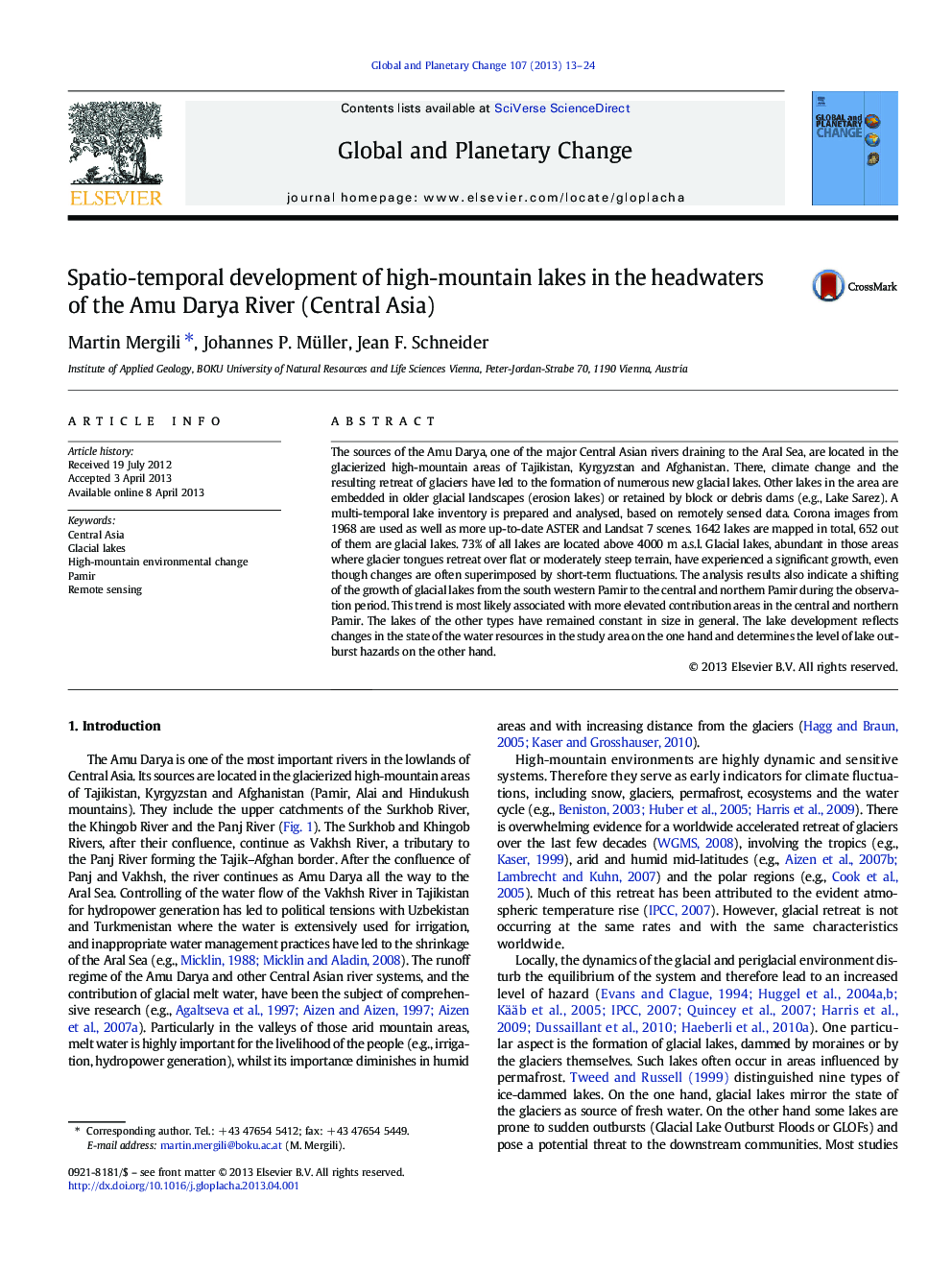| کد مقاله | کد نشریه | سال انتشار | مقاله انگلیسی | نسخه تمام متن |
|---|---|---|---|---|
| 4463503 | 1621674 | 2013 | 12 صفحه PDF | دانلود رایگان |

• 1642 lakes exist in the research area, 652 are glacial lakes in a strict sense.
• Glacial lakes show a clear growing trend not observed for other lakes.
• Glacial lake growth is related to glacier retreat or decay in rather flat areas.
• A shift of glacial lake growth towards more elevated catchments is observed.
The sources of the Amu Darya, one of the major Central Asian rivers draining to the Aral Sea, are located in the glacierized high-mountain areas of Tajikistan, Kyrgyzstan and Afghanistan. There, climate change and the resulting retreat of glaciers have led to the formation of numerous new glacial lakes. Other lakes in the area are embedded in older glacial landscapes (erosion lakes) or retained by block or debris dams (e.g., Lake Sarez). A multi-temporal lake inventory is prepared and analysed, based on remotely sensed data. Corona images from 1968 are used as well as more up-to-date ASTER and Landsat 7 scenes. 1642 lakes are mapped in total, 652 out of them are glacial lakes. 73% of all lakes are located above 4000 m a.s.l. Glacial lakes, abundant in those areas where glacier tongues retreat over flat or moderately steep terrain, have experienced a significant growth, even though changes are often superimposed by short-term fluctuations. The analysis results also indicate a shifting of the growth of glacial lakes from the south western Pamir to the central and northern Pamir during the observation period. This trend is most likely associated with more elevated contribution areas in the central and northern Pamir. The lakes of the other types have remained constant in size in general. The lake development reflects changes in the state of the water resources in the study area on the one hand and determines the level of lake outburst hazards on the other hand.
Journal: Global and Planetary Change - Volume 107, August 2013, Pages 13–24